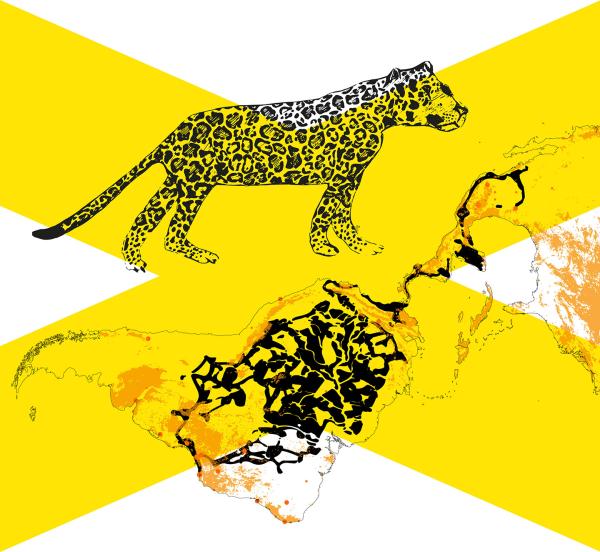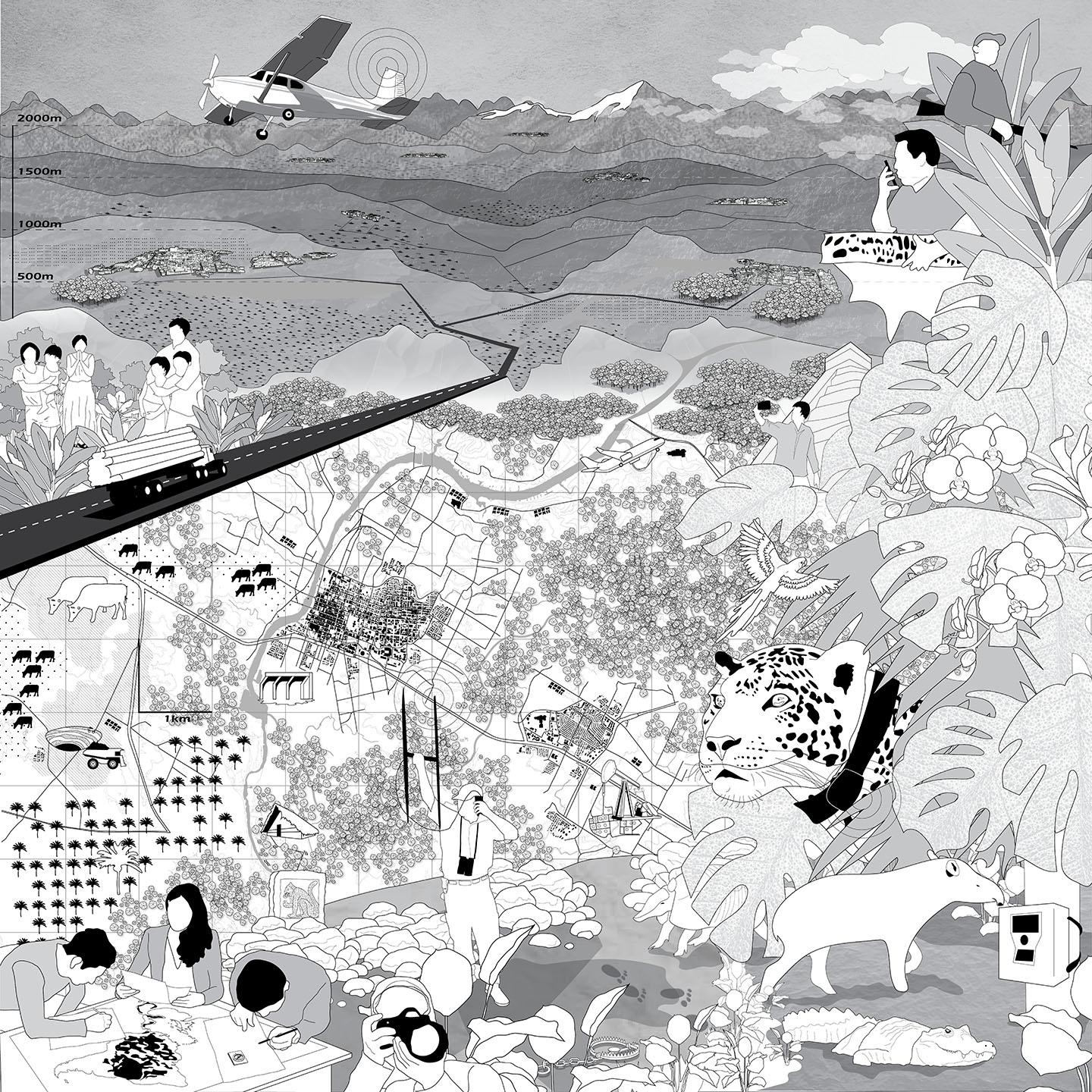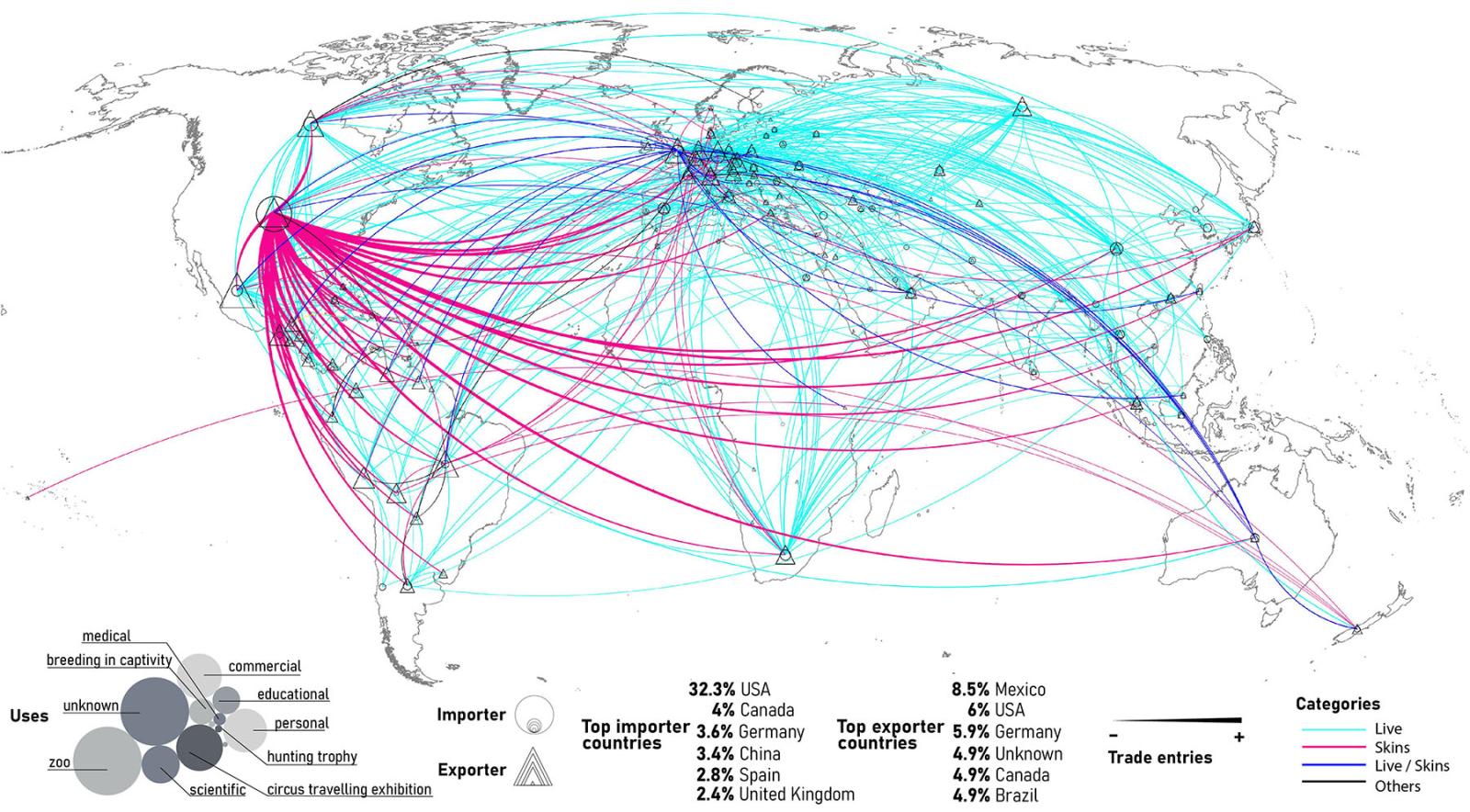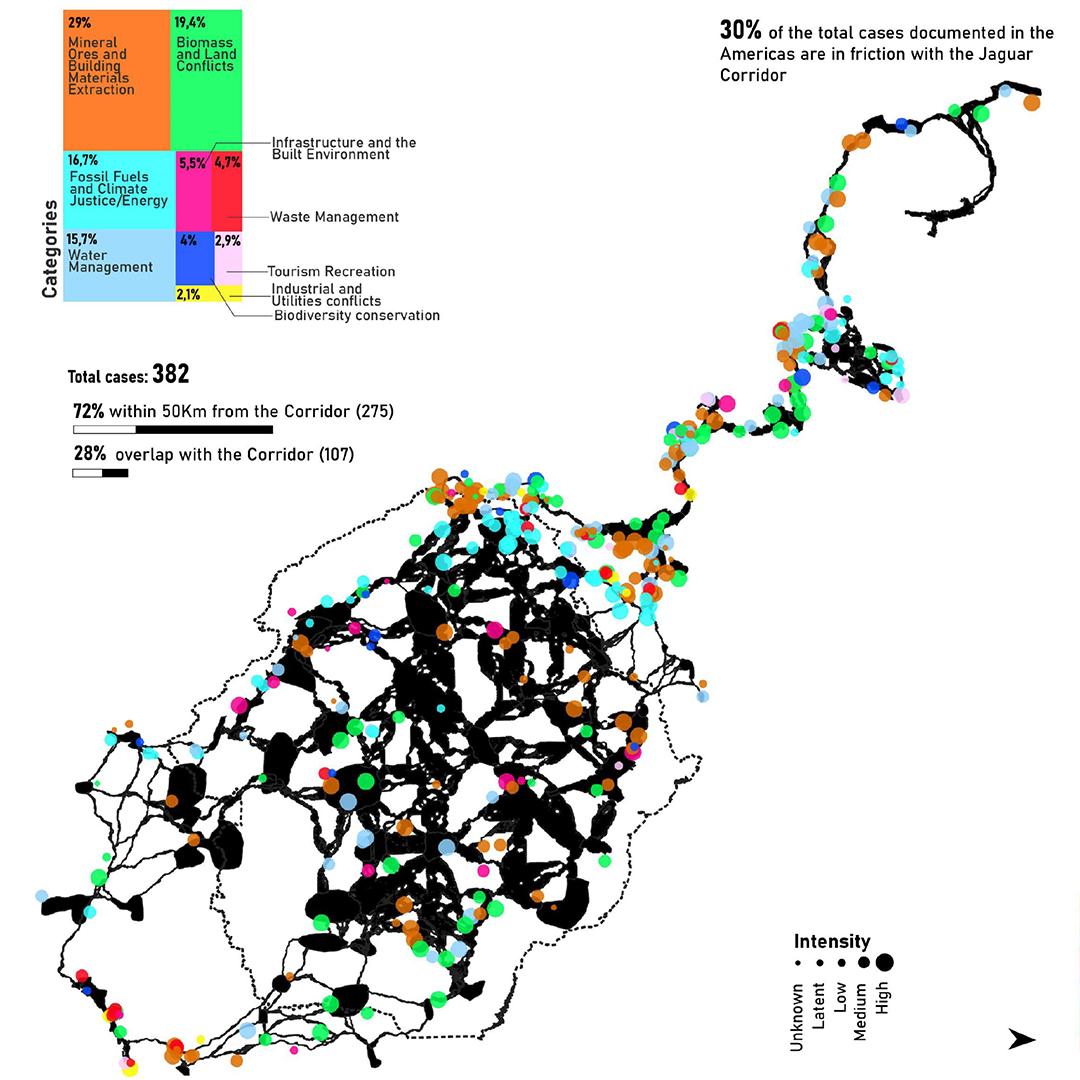Graham Foundation Awards Funding for “Jaguar Lens” Exhibition

As part of their 2024 grant cycle, the Graham Foundation has awarded funding to an exhibition envisioned and curated by Assistant Professor of Practice Juana Salcedo. Building on her ongoing research and work exploring the territory of the jaguar, Salcedo’s “Jaguar Lens” will consider the urban origins of today’s socio-environmental breakdown and biodiversity loss in the Americas, encouraging the spatial arts to reconsider humans’ ability to cohabitate with other species.
“Jaguar Lens” is one of fifty-six projects and only eleven exhibitions selected for the prestigious award out of nearly 600 global submissions. This is the second time Graham has recognized Salcedo’s work around the Jaguar Corridor; the first was a 2020 research grant to explore how the Jaguar Corridor can be interpreted as an infrastructure of care for the sustenance of human and nonhuman life.
Slated to be on view at The University of Texas at Austin School of Architecture in Spring 2025, Salcedo’s proposed exhibition invites spatial researchers and practitioners to move away from a city-centric view of the urban experience by adopting the lens of the jaguar, the largest feline and top terrestrial predator of the Americas. Combining a series of large-scale printed maps, interactive digital maps, and visual narratives, the exhibition will offer a view of the ways urbanization processes and socio-environmental struggles are entangled and in friction with the Jaguar Corridor—an unprecedented landscape integration project that envisions a continuous territory from northern Argentina to the southern United States to ensure the survival of the species. With a presentation of this cartography of interconnection, this exhibition aims to foster a deeper understanding of the urban origins of today’s environmental and biodiversity crises, encouraging the spatial arts to participate in radically imagining possible landscapes of multispecies cohabitation.
An architect and a scholar working at the intersection of architecture and urbanism, Salcedo joined the School of Architecture faculty in Fall 2022. Focusing on Latin America, her research seeks to reconnect architecture and cities with the larger environmental and socio-economic processes that shape them, drawing on concepts and methods from environmental history, urban political ecology, decolonial studies, and science and technology studies. She also explores visualizations and mapping as a key means to foreground spatial issues and territorial discussions to broader audiences.
During last year’s awards cycle, the School of Architecture Associate Professor Charles L. Davis II also received funding for an exhibition, “The Black Home as Public Art,” which will open in August 2024, and will be accompanied by a symposium, September 11-12. Since its inception in 1956, the Graham Foundation has supported more than 5,100 projects under its mission to foster the development and exchange of diverse and challenging ideas about architecture and its role in the arts, culture, and society.
To learn more about Salcedo’s work and research, read her Fall 2023 Platform essay, “Mapping the Jaguar Corridor: A Radiography of Urbanization,” and the School of Architecture’s Q&A with Salcedo during her first year.
Above: "Jaguar Lens." Illustration: Juana Salcedo




